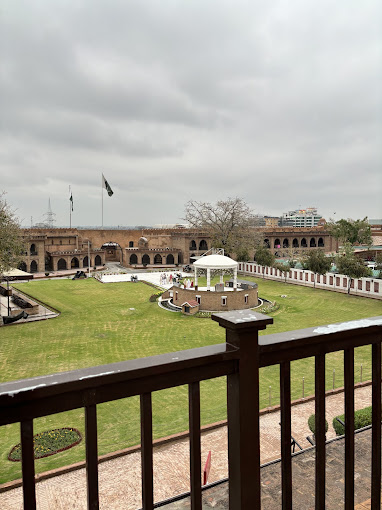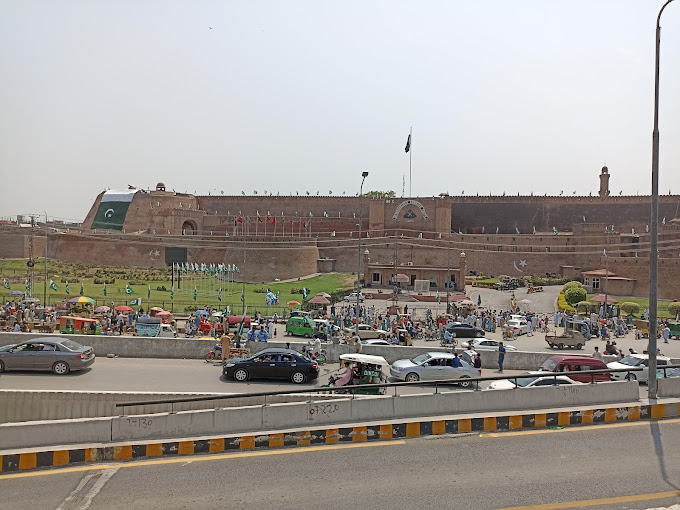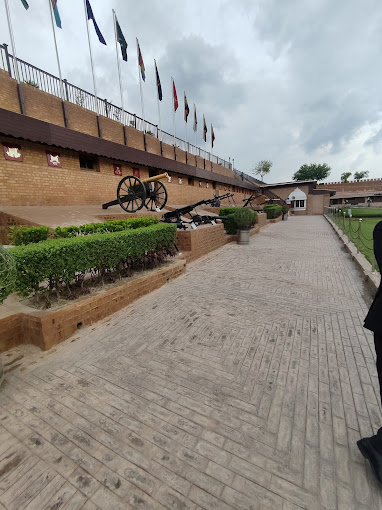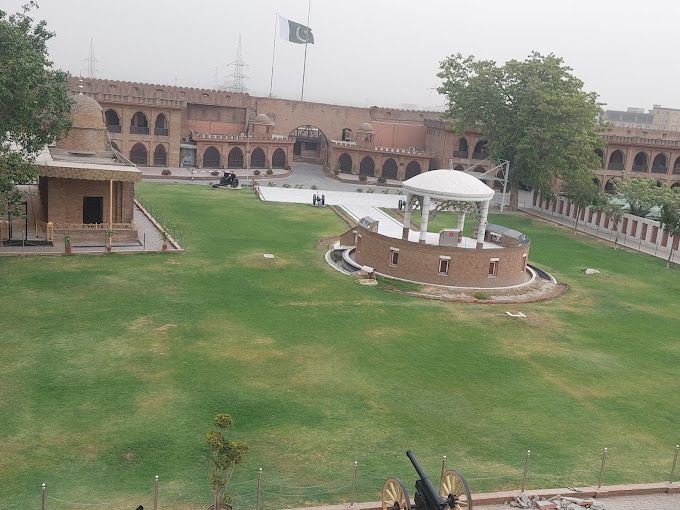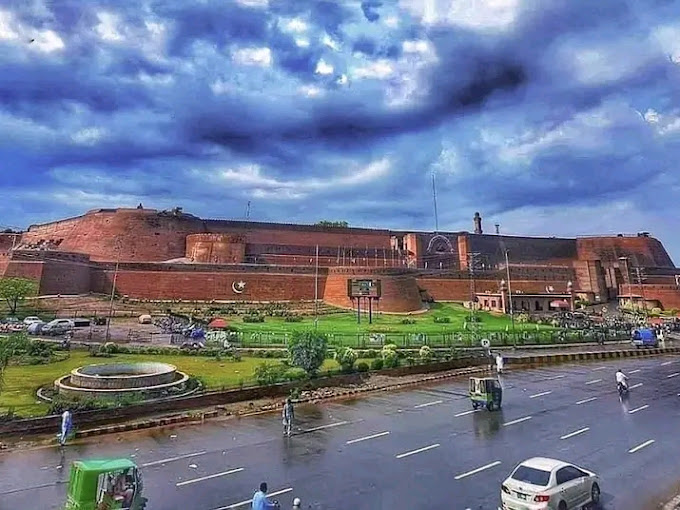In the center of Peshawar, the Bala Hisar Fort stands as a symbol of the city's long and rich history. Dating back to at least the 7th century, this fort has seen many empires rise and fall. It has always been an important military stronghold and a sign of power.
Historical Significance
The name "Bala Hisar" means "High Fort" in Persian. This name reflects its high position, giving it a great view of the surrounding area. The exact age of the fort is unknown, but it might have been built during the Kushan Empire. The fort became more famous when the Mughal Emperor Babur captured it in 1526 and wrote about it in his memoirs.
Under the Mughal rule, the fort was rebuilt and became a grand structure. Later, other rulers like the Durrani Empire and the Sikh Empire also added to its defenses. The British used Bala Hisar during their colonial rule and made more changes to it.
Architectural Marvel
Bala Hisar Fort's design is a mix of different styles, showing the various cultures and empires that influenced it. The fort has strong walls, large open areas, and detailed gateways. Its high, thick walls were built to protect against attacks, showing the advanced military engineering of those times.
The main entrance, called the Lahori Gate, is very impressive with its grand design and decorations. Inside the fort, there are many buildings like barracks and armories, each telling a part of its history.
Cultural and Strategic Role
Over the years, Bala Hisar Fort has served many purposes. It was a royal home, a government seat, and a military base. Its location on the historic Grand Trunk Road made it key for controlling trade and military movements between South Asia and Central Asia.
Today, the fort is still important for military purposes. It is the headquarters for the Frontier Corps, a paramilitary force that keeps the region secure. Even though it is used by the military, there are efforts to preserve and restore the fort, recognizing its cultural and historical value.
Preservation Efforts
Keeping Bala Hisar Fort in good condition is not easy because it has been used so much and has aged over time. However, the Pakistani government and various cultural heritage groups are working to restore and maintain the fort. These efforts aim to protect the fort as a cultural landmark, making it accessible to tourists and historians.
Preserving the fort is important for understanding the region's history and teaching future generations about Peshawar's legacy and the broader history of South Asia.
Conclusion
Bala Hisar Fort is a vital part of Peshawar's past, showing the city's historical and cultural journey. Its walls have seen the empires come and go and have been part of many historical events. Today, as a military base and a heritage site, Bala Hisar represents the enduring spirit of Peshawar. Ongoing preservation efforts ensure that this historic fort remains a key part of the region's rich history for people to explore and appreciate.



